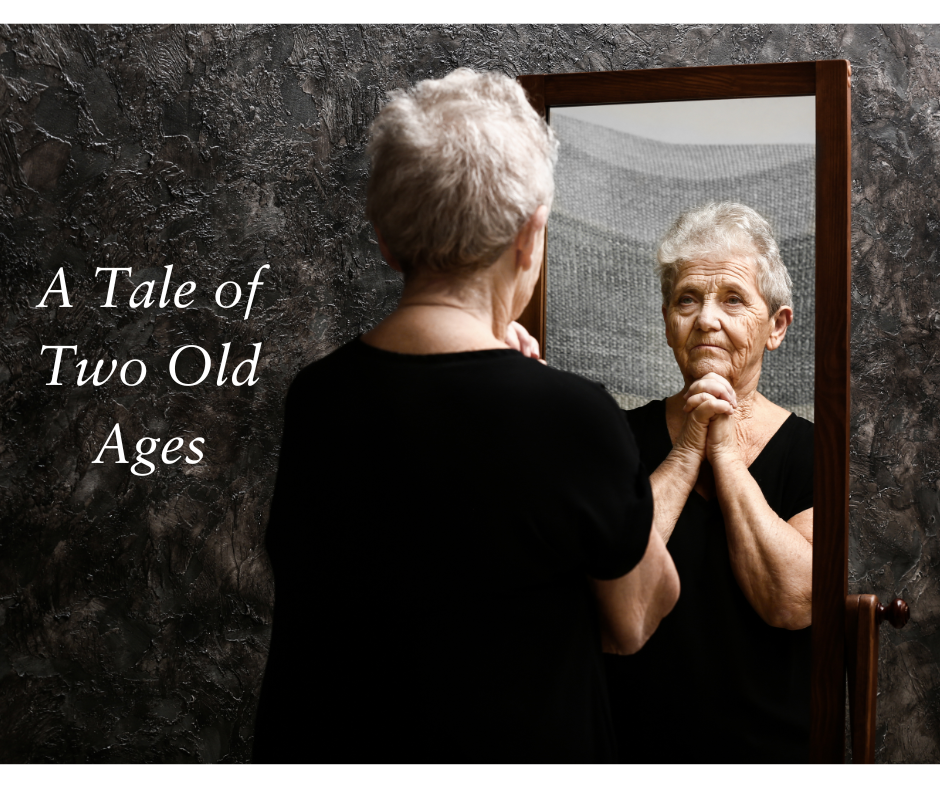Ageism & “Aging Well”
Summary
The solution to ableism and ageism in assisted living may require that we tear down our distinctions between "good" aging and "bad" aging. Promoting a culture of support and inclusion can go a long way toward setting the right tone in a community.
 “There are so many old people here.”
“There are so many old people here.”
It was a funny remark coming from “Peggy,” a woman in her late eighties, her wrists adorned with clanking bracelets and her eyes gleaming with energy. She had recently moved into assisted living and was leaving the dining room, where she’d been partaking of dinner with fellow residents. Peggy was certainly not the youngest person in the room.
Even in an environment that caters specifically to older adults, old age is a state of existence that is often unconsciously disparaged. When a woman such as Peggy makes a spirited remark to the effect of “I don’t feel old,” we are inclined to admire her for it. Two pictures emerge: “aging well,” a laudable condition in which older adults manage to evade disability and decline – and simply “aging,” a condition in which decline inevitably catches up with us.
This dual picture may seem harmless enough, but a 2014 article published by the LeadingAge Magazine has linked it to a culture of social rejection and ostracism in senior living communities. The authors, all professionals in the senior services sector, were discussing the problem of ageism, a form of prejudice against older adults. Ageism is usually thought of as an intergenerational phenomenon, in which a youth-obsessed culture marginalizes its senior citizens. As the LeadingAge group discussed their own experiences with ageism, they discovered that “some of the most blatant examples of ageism and ableism occur right under our noses – specifically, within retirement living settings.”
The article outlines a sort of feedback loop that perpetuates a harmful status quo. It begins, very simply, with an internalized fear of declining with age. When older adults move into assisted living or a retirement community, the last thing they want to see (according to conventional marketing wisdom) is their internal fear of decline reflected in the community. The sight of frail elders in wheelchairs becomes a deal-breaker, and marketing professionals go to great lengths to portray their assisted living residence as active places. With residents and marketing reinforcing one another, there is no longer room for the less independent, frail residents.
“Ableism” refers to a prejudice against those who live with diminished abilities – it could be anything from hearing loss, mobility problems, Parkinson’s disease or cognitive decline. It fuels a special type of ageism in assisted living, a force that can lead to ostracism and bullying of more vulnerable residents by the more independent residents. When healthier, more independent residents begin to shun those who live with physical or cognitive ailments, the results can be devastating. Even an isolated incident – a slight at the dining table or a jeer in passing – can have a lasting impact on how a resident feels about their place in a community. Such isolated incidents often lead to social isolation and increased rates of depression.
The same residents who shun their frailer counterparts are likely to suffer from their own negative attitudes later on. According to the research of pioneers like Yale’s Dr. Becca Levy, people who are fearful or pessimistic about old age are more likely to experience their own physical, cognitive and psychological setbacks to a greater degree than those with positive attitudes about aging. The LeadingAge article cites a study from the Journal of Personality and Psychology that “found that those with negative self-perceptions of aging had life spans that were 7.5 years shorter than those with positive self-perceptions of aging. There is significant, and potentially life-threatening harm being inflicted on those who are marginalized or ostracized in retirement communities.”
The solution to ableism and ageism in assisted living may require that we tear down our distinctions between good aging and bad aging. In his book Dementia Beyond Disease: Enhancing Well-Being, G. Allen Power makes the case for integrating traditional assisted living residents with memory support residents living with Alzheimer’s disease and dementia.
He believes that this is a first step toward combating the stigma of Alzheimer’s and creating a more accepting environment for all older adults. His ideas are beginning to garner support in some communities.
In assisted living, the diversity of ages and abilities can span full generations. It’s not unheard of for table of three at dinner to include a 60-year old, an 80-year old and a 98-year old. As we continue to live longer, and as more baby boomers enter assisted living, it is more important than ever that we embrace a more unified, inclusive concept of what it means to age well.



